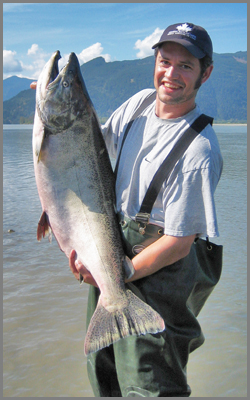
|
Ken began life in the Jackson Lab as an honours student conducting a summer research project that used Longnose Dace as the response organism in an effects-based approach to understand changes in river health along ~300 km of the Red Deer River (Jeffries KM, LJ Jackson, LE Peters & KR Munkittrick (2008). Archives of Environmental Contamination and Toxicology, 55: 639-651).
Ken then stayed for an M.Sc. program where he continued to use dace as an effects-based sentinel species, but changed to the Oldman and Bow Rivers where the land uses are different. He added molecular fish endocrinology (with help from Erik Nelson and Dr. Hamid Habibi) and organic chemistry (with help from Dr. Michael Ikonomou) tools to his skill set so he could consider possible effects of endocrine disrupting compounds on dace reproductive health. The most striking result was that in the Oldman River the sex ratio of adult dace populations is as high as 90% female-biased. You can read more about Kenís M.Sc. work in: Jeffries KM, Nelson ER, LJ Jackson & HR Habibi (2008) Environmental Toxicology and Chemistry, 27: 2042-2052, and in another paper soon to appear: Jeffries KM, Jackson LJ, Ikonomou M & HR Habibi (2010) Environmental Toxicology and Chemistry, in press.
Ken is currently pursuing his Ph.D. in Dr. Scott Hinchís lab at the University of British Columbia. He is using genetic techniques to examine changes in large numbers of genes and therefore biological pathways associated with thermal stress to better understand the effects of thermal stress on Pacific salmon physiology and mortality.
|













